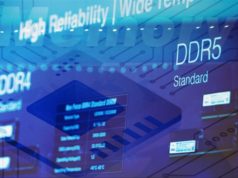
Most computers and smartphones feature two kinds of chips. One kind is built for speed and the other is built for storage. A new kind of chip promises to offer both speed and storage in a single package, paving the way for a memory chip 1,000 times faster than today’s.
Scientists at Stanford recently reported impressive results testing a new class of semiconductor materials.
“This work is fundamental but promising,” Aaron Lindenberg, an associate professor of materials science and engineering at Stanford, said in a news release. “A thousandfold increase in speed coupled with lower energy use suggests a path toward future memory technologies that could far outperform anything previously demonstrated.”
The new class of semiconductor materials benefit from a feature called phase change memory.
Because the material can switch between two phases — with two different atomic structures — it can be designed to carry out multiple functions. A crystalline-structure is best suited for the flow of electrons — the flow of digital information. An amorphous structure is best for memory storage, for constricting the movement of electrons.
The intermediate phase during the transition from crystalline to amorphous structure is known as “amorphous on.” Electrons can flow through this amorphous structure as they would a crystal.
During experiments, Stanford researchers found they could trigger an amorphous on phase using a supercharged jolt of electricity, the equivalent of a lightning strike. The phase change happened in a single picosecond, one trillionth of second.
“Nobody had ever been able to investigate these processes on such fast time-scales before,” Lindenberg said.
The new research — detailed in the journal Physical Review Letters — suggests phase-change semiconductor materials can not only be used to perform both short- and long-term memory functions, but can switch their structure back and forth at impressive speeds.
“A new technology which demonstrate a thousandfold advantage over incumbent technologies is compelling,” Lindenberg said. “I think we’ve shown that phase change deserves further attention.”
© 2016 UPI Science News under contract with NewsEdge. -.







![[Video] Samsung Outlines AI Vision at The First Look 2026](https://loginby.com/itnews/wp-content/uploads/2026/01/Video-Samsung-Outlines-AI-Vision-at-The-First-Look-2026-100x75.jpg)